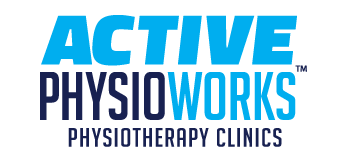Clavicle Fracture in Athletes
Nov 09, 2015
Wednesday November 4, 2015 Google Trends reports a large surge in the search term “Connor McDavid” (>100,000 searches) after the hockey phenom left his game in the second period clenching his shoulder. There was only more frequently Googled term in Canada that day: “Justin Trudeau”.
The Injury: Who and How?
A broken collarbone (clavicle) is not a common injury in the average population, but we notice its prevalence increases exponentially in some sporting demographics. Two things are required for a clavicle fracture to occur; a large amount of force (sufficient to break the thin flat bone) AND the point of contact of the force impacting directly on the shoulder or through an outstretched arm. The collarbone is the only bony attachment between your shoulder girdle/arm and the rest of your body. It is therefore required to dissipate large amounts of force traveling through it, and when these forces become too great it is often the weak link in the skeletal system that will break. In hockey, falling headfirst into the boards with the shoulder being the principle point of contact is a very common mechanism of injury, as was the case with Mr. McDavid. Slams in wrestling, a cycling crash, a hard rugby/football hit or skiing/snowboarding/skateboarding falls are other common sporting mechanisms of injury.
Management and Recovery
Surgery is commonly performed if the bone is broken into several pieces (comminuted fracture) or if the bone is broken in half and the two pieces are more than ~15-20mm apart (displaced fracture). The surgical procedure is referred to as an ORIF (open reduction internal fixation) or as most people know it, “screws and a plate”. With less severe fractures, conservative management may be more appropriate, which entails supporting the weight of the arm in a triangular sling until sufficient ossification has occurred and using appropriate drugs for pain management as needed.
How long will the athlete be out? That’s always the million-dollar question. Children typically heal faster, possibly as quickly as four or five weeks. Clavicle fractures in adolescents typically take 6-8 weeks to fully ossify and adults likely need 10-12 weeks to heal. These are only estimates based on average healing timelines and depending on severity and complications it may take longer. It would be wise to add 1-2 weeks onto the timeline for athletes after full ossification occurs to allow for strengthening and reconditioning of the shoulder girdle prior to returning to game play, particularly if their sport involves contact.
I personally would anticipate seeing Connor McDavid back in full action in less than 10 weeks. Patrick Kane underwent surgery for a similar injury in 2015 and returned to full game play 7 weeks and 1 day later; just in time for game 1 of his team's Stanley Cup winning playoff run.

(an example of a patients broken clavicle, not directly taken from any person in particular)
Please add your bio info through your member profile page, or through your dashboard.

